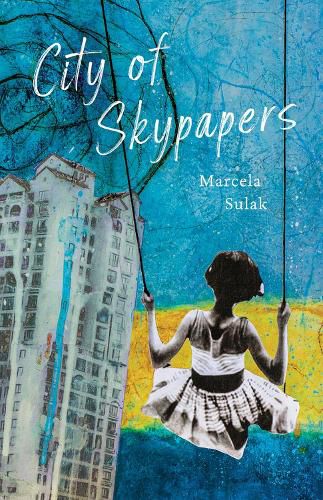Readings Newsletter
Become a Readings Member to make your shopping experience even easier.
Sign in or sign up for free!
You’re not far away from qualifying for FREE standard shipping within Australia
You’ve qualified for FREE standard shipping within Australia
The cart is loading…






This title is printed to order. This book may have been self-published. If so, we cannot guarantee the quality of the content. In the main most books will have gone through the editing process however some may not. We therefore suggest that you be aware of this before ordering this book. If in doubt check either the author or publisher’s details as we are unable to accept any returns unless they are faulty. Please contact us if you have any questions.
On writing CITY OF SKYPAPERS: CITY OF SKYPAPERS was an effort of daily writing in Tel Aviv for a span of about three years during which time I tried to inhabit and reconcile Jewish sacred time (holidays, Shabbat, daily prayer rituals) with private, social, and civil secular time-two wars with their worries and missiles, explosions, and a sense of solidarity, as well, with beloved friends in Gaza or West Bank, a custody lawsuit, daily small-scale agriculture, running along the Yarkon river, riding public transportation in Tel Aviv and Ramat-Gan, teaching, friendship, love and its disappointments, mothering. It attempts an openness to the daily world, and an attention to these details, charged by an interpenetration of the sacred and the secular, aspirations and reality. I wanted to mimic in writing the way the mind works, the reality its imagination builds, the relationships it creates, among people, objects, and geography.
My technique involved a morning ritual of moving through time in space-running, bussing, urban farming, preparation for Shabbat or holiday or for work, all the while attending to the details of the ritual. I would write down observations, and then, to separate out what was essential, I would place the writing in a poetic form-ottava rima, sonnet, heroic couplet, or syllabic, usually. Sometimes the forms fit, and highlighted the essential. Sometimes the forms did not, and I let them fall, but the exercise was useful in identifying the heart of each piece. Sometimes the routines were disrupted by war, internal travel, bureaucracy gone awry, and other trauma. These provided intense opportunities of observance and attention to the human condition in the worlds we create, and the worlds that were made before we arrived on the scene.
$9.00 standard shipping within Australia
FREE standard shipping within Australia for orders over $100.00
Express & International shipping calculated at checkout
This title is printed to order. This book may have been self-published. If so, we cannot guarantee the quality of the content. In the main most books will have gone through the editing process however some may not. We therefore suggest that you be aware of this before ordering this book. If in doubt check either the author or publisher’s details as we are unable to accept any returns unless they are faulty. Please contact us if you have any questions.
On writing CITY OF SKYPAPERS: CITY OF SKYPAPERS was an effort of daily writing in Tel Aviv for a span of about three years during which time I tried to inhabit and reconcile Jewish sacred time (holidays, Shabbat, daily prayer rituals) with private, social, and civil secular time-two wars with their worries and missiles, explosions, and a sense of solidarity, as well, with beloved friends in Gaza or West Bank, a custody lawsuit, daily small-scale agriculture, running along the Yarkon river, riding public transportation in Tel Aviv and Ramat-Gan, teaching, friendship, love and its disappointments, mothering. It attempts an openness to the daily world, and an attention to these details, charged by an interpenetration of the sacred and the secular, aspirations and reality. I wanted to mimic in writing the way the mind works, the reality its imagination builds, the relationships it creates, among people, objects, and geography.
My technique involved a morning ritual of moving through time in space-running, bussing, urban farming, preparation for Shabbat or holiday or for work, all the while attending to the details of the ritual. I would write down observations, and then, to separate out what was essential, I would place the writing in a poetic form-ottava rima, sonnet, heroic couplet, or syllabic, usually. Sometimes the forms fit, and highlighted the essential. Sometimes the forms did not, and I let them fall, but the exercise was useful in identifying the heart of each piece. Sometimes the routines were disrupted by war, internal travel, bureaucracy gone awry, and other trauma. These provided intense opportunities of observance and attention to the human condition in the worlds we create, and the worlds that were made before we arrived on the scene.